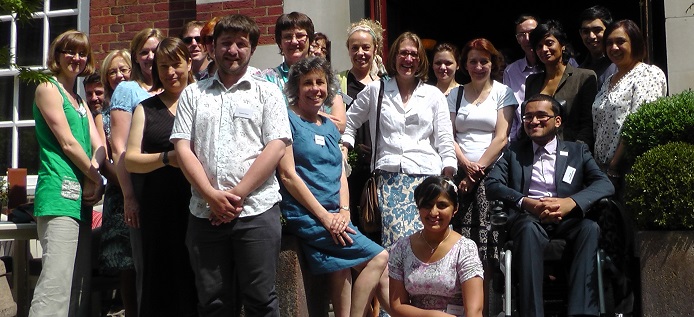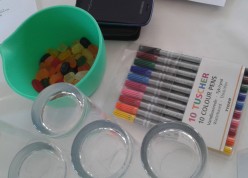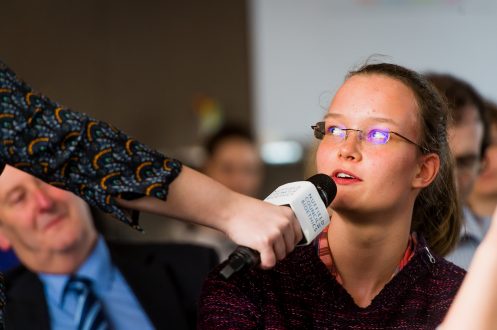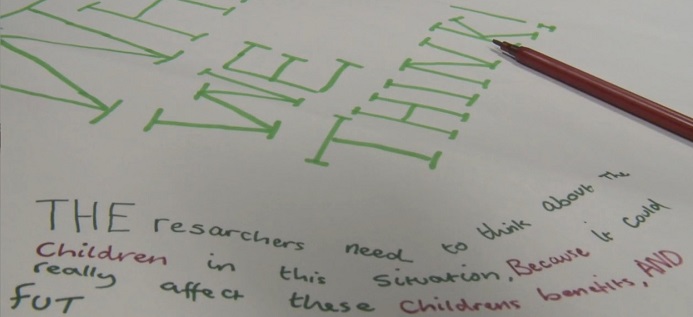Blog post
Facilitating meaningful engagement
Last week I had the double good fortune of being invited to Padua to contribute to an intensive short course on the ethics of paediatric research hosted by the University – a beautiful place to visit (especially in May) and a topic very close to my heart. In particular, my hosts asked me to talk about the ‘participatory methodology’ at the core of the Council’s two-year project that culminated in our 2015 report Children and clinical research: ethical issues. Reviewing how we had approached that project, and what we had learned from it, I was prompted to think a little further about whom we try to engage with our work – and why.
In the Children and research project, we were clear from the start that we needed to make sure that children, young people and parents were at the centre of our deliberations all the way through. But which children, young people and parents? How would we reach them? In what way could they be ‘representative’? How could a diverse range of voices be heard? As an ethics body with a remit to identify and explore ethical questions arising out of developments in medicine and biology, we did not start out as ‘experts’ in children’s research, nor did we have ready-made links with children’s and parents’ organisations. So what did we do?
We began, following the Council’s usual practice, by setting up a cross-disciplinary ‘working party’, bringing together members with knowledge of children’s medicine, nursing, law, ethics, psychology, social science, research governance and public engagement. This was not intended to be an exhaustive list of relevant areas of expertise – the primary task of the working party is to work together to produce a consensus report, drawing on the evidence gathered in a plethora of ways, and from many different people, during its inquiry. The number of Working Party members has to be limited to enable it to function well as a committee – and those whom we invite to join have to be willing to listen, develop their thinking throughout the project, and compromise with fellow members’ views where necessary.
The first meeting of the Working Party was dedicated to thinking hard about what ‘meaningful engagement’ with children, young people and parents would look like, leading rapidly to the holding of an initial ‘stakeholder meeting’ with young people and parents, who were invited to help frame this inquiry by setting out what they saw as the key ethical challenges arising in clinical research with children. Representatives from the Royal College of Paediatrics and Child Health’s ‘young people’s group’ rewrote our sketchy first draft of an online questionnaire for young people and for parents, and helped inform a call for evidence aimed at professionals. The response we received (supported in particular by the National Institute for Health Research’s ‘young persons' advisory groups’ or YPAGs) gave us a snapshot of the diversity of experiences, both positive and negative, of those with existing knowledge of research processes.

Engagement in schools, both as an ad hoc visit to a London primary school, and a more structured (and filmed) project in three Brighton schools, involving 10 to 18 year olds as ‘youth research ethics committees’, enabled us to hear the thoughts and opinions of those who probably hadn’t thought much about research before. Working Party members based at a major research site in Kenya drew on existing adult community engagement structures and links with local schools to explore the views and experiences of those living in very different situations from the majority of our UK collaborators. Alongside this, we, of course, drew on the published literature exploring how children, young people and parents experience being invited to take part in research.

As our ideas began to develop and crystallise, we held a follow-up ‘stakeholder conference’ (involving some of the same young people and parents from the first meeting, and some new), where we used films, games, talks, and discussion sessions to gain feedback on questions as diverse as the perceived vulnerability of children in research, how decisions should be made in families, and who should be responsible for deciding what research gets done in the first place.
Furthermore, one of the parents, and one of the sixth formers involved in the Brighton schools project, acted as ‘peer reviewers’ of the full 200 page draft report; the Liverpool YPAG advised us on how to make our findings accessible across the age range; around forty young people from YPAGs in England, Scotland and the US gave frank feedback on an early draft of our ‘magazine’ format; and fourteen 10-18 year olds took part in a workshop to help develop our animation. Finally, our report launch centred around the participation of young people in the project, with a number of those who had been involved travelling to London and being interviewed in a TV talk-show-style event.

The engagement of children, young people and parents in this project had a powerful influence on the ethical analysis developed by the Working Party and the content of the final report, not least in our emphasis on the capacity for children (even very young children) to take an active part in determining their own lives and actions – in contrast to the assumption of passivity inherent in the traditional approach to ‘vulnerable groups’. Similarly, it informed and supported the working party’s focus on the importance of partnership and collaboration between researchers and families in the development of research design that takes children’s needs and interests into account from the beginning. Our methods were inevitably ‘ad hoc’ to begin with, drawing on existing networks of young people (we owe particular gratitude to the RCPCH and NIHR groups and their facilitators) – but by casting our net widely, and by seeking input not just from those already engaged and interested but also (through schools) with those who had never thought about research before, we were confident that we had heard, and taken into account, the widest range of opinions and experiences that we possibly could.

So what might all this mean for other Nuffield Council projects? The particular means we used in this project were of course tailored for children and young people – but the aims and ideals within this methodology apply across the board. Whether considering information-sharing in donor conception, the growing use of cosmetic procedures, the introduction of non-invasive prenatal testing or the implications of developments in genome editing, it is critical for us to reach out in appropriate ways to those potentially affected by these technologies or developments – whether through online consultation, face-to-face meetings, deliberative discussions or in many other ways. As I noted earlier, our aim when setting up a Working Party is not to ensure that every possible perspective is represented in the membership – indeed, it is important to consider that by inviting a designated ‘lay’ or ‘patient’ perspective there can be the real risk of disenfranchising those with apparently similar medical or other backgrounds but with opposing views. But it is very much our job to ensure that the Working Party hears, and gives due consideration to, the range of experiences and moral intuitions of those whose lives are potentially affected by developments in biology and medicine. Consequently, a ‘Nuffield report’ is not one that any one person would have written on their own, but its strength lies in the debate and negotiation that shapes and nuances its development, ensuring that our conclusions and recommendations are more likely to have traction in the real world. We don’t just want to produce a well-argued report. We also want to make a difference in policy and practice, with advice that is based on well-founded ethical analysis.
Comments (0)
Join the conversation